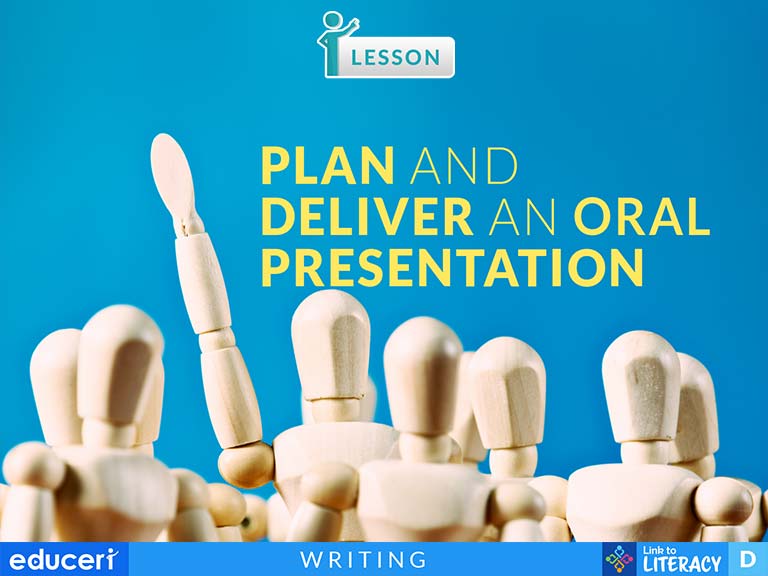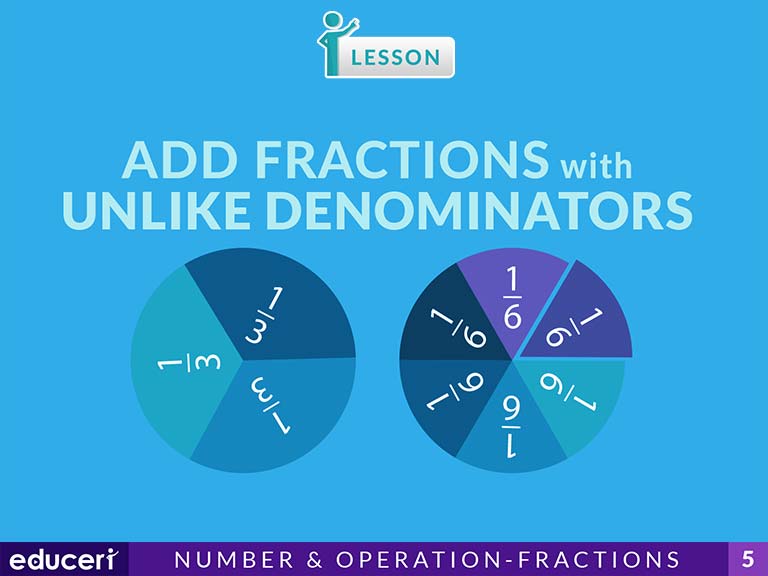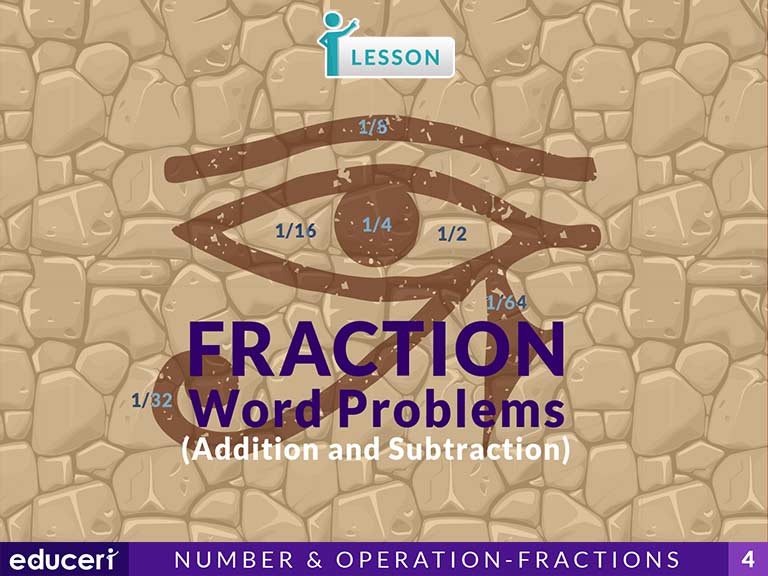Special Program: Grade 5 Summer School
Grade 5 Summer School
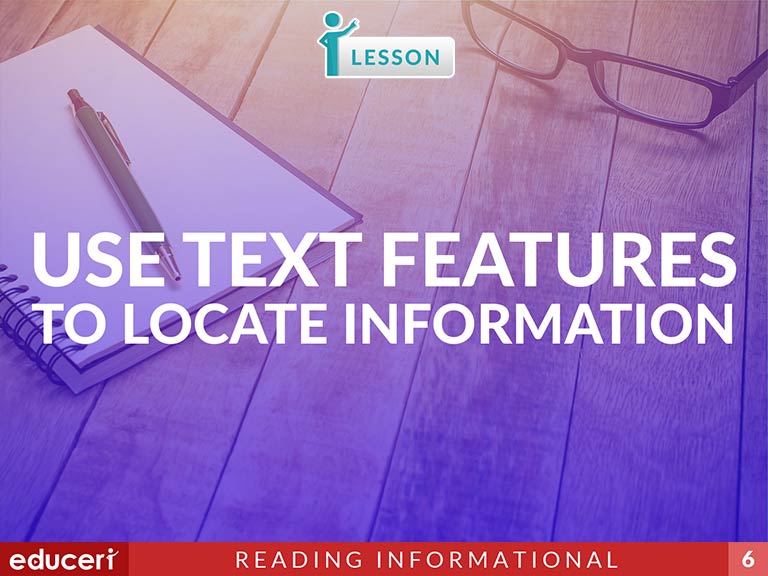
Use Text Features to Locate Information
This English Language Development lesson is a part of our Link to Literacy program.
Share This Lesson
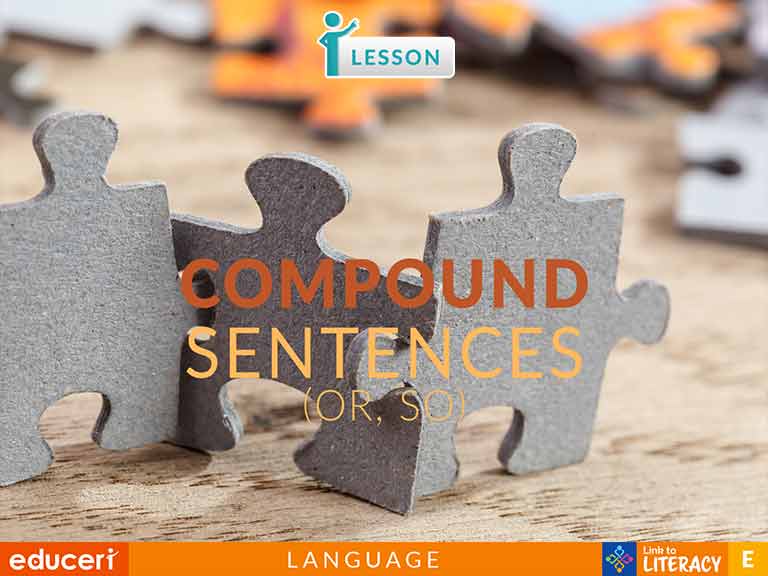
Compound Sentences (or, so)
This lesson is a part of our Link to Literacy program.
Share This Lesson
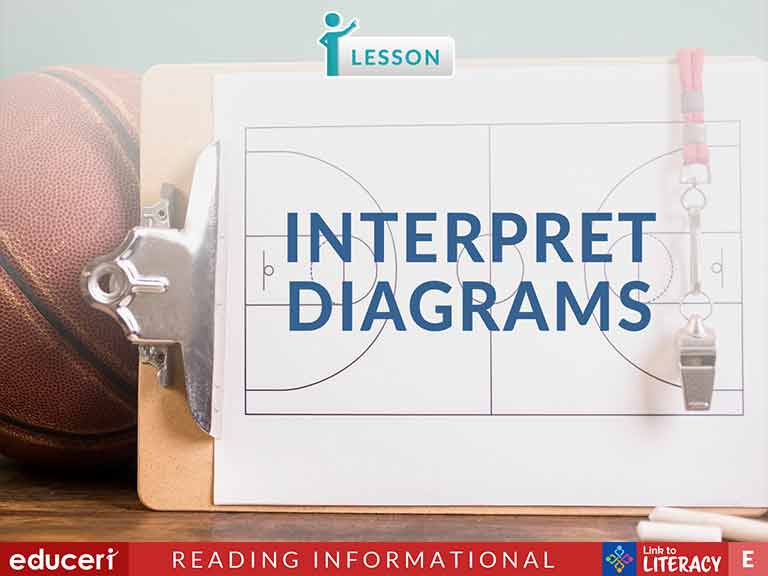
Interpret Diagrams
This English Language Development lesson is a part of our Link to Literacy program.
Share This Lesson
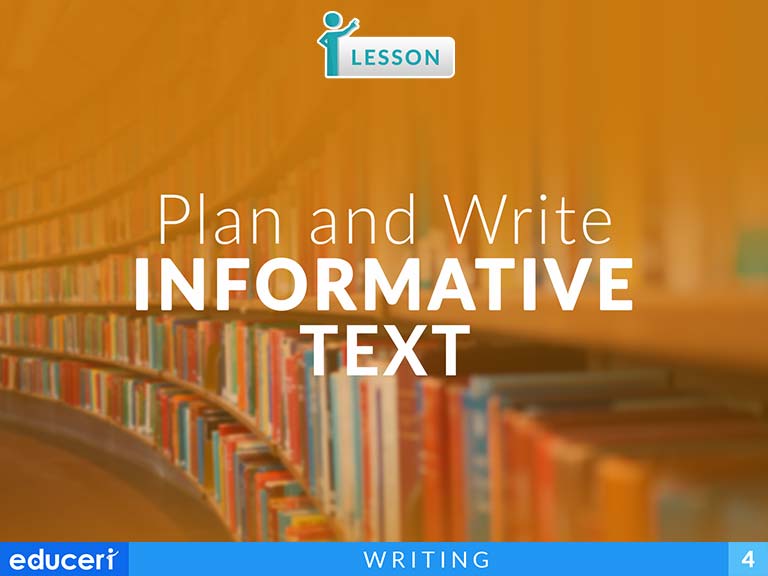
Plan and Write Informative Text
W.4.2 Write informative/explanatory texts to examine a topic and convey ideas and information clearly.
W.4.2.AW.4.2.A Introduce a topic clearly and group related information in paragraphs and sections; include formatting (e.g., headings), illustrations, and multimedia when useful to aiding comprehension.
W.4.2.BW.4.2.B Develop the topic with facts, definitions, concrete details, quotations, or other information and examples related to the topic.
W.4.2.CW.4.2.C Link ideas within categories of information using words and phrases (e.g., another, for example, also, because).
W.4.2.DW.4.2.D Use precise language and domain-specific vocabulary to inform about or explain the topic.
W.4.2.EW.4.2.E Provide a concluding statement or section related to the information or explanation presented.
This writing lesson covers how to plan informative text. The lesson includes research-based strategies and strategic questions that prepare students for assessments. In this lesson, students read the research and identify related information that is needed to complete a graphic organizer. Then they complete the graphic organizer which asks for a topic, three facts and details, and a conclusion. In addition to the lesson, there are four pages of facts and details related to topics for review and organizing.
Share This Lesson
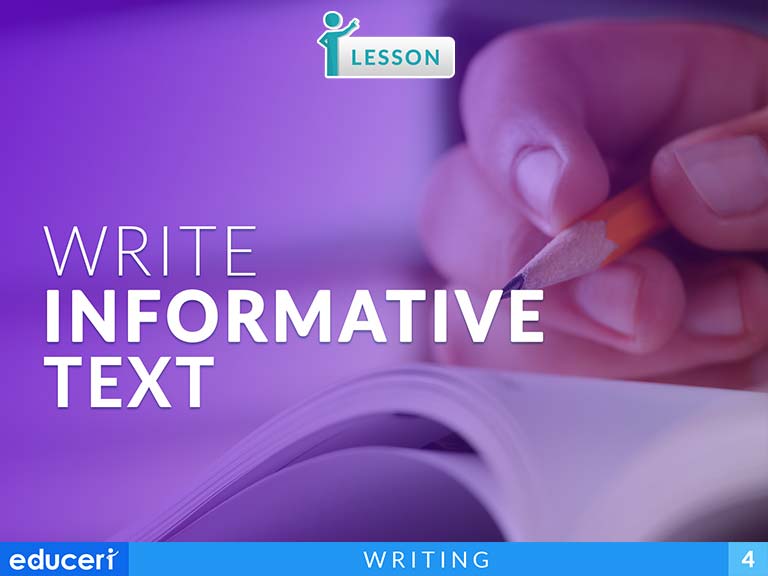
Write Informative Text
W.4.2 Write informative/explanatory texts to examine a topic and convey ideas and information clearly.
W.4.2.AW.4.2.A Introduce a topic clearly and group related information in paragraphs and sections; include formatting (e.g., headings), illustrations, and multimedia when useful to aiding comprehension.
W.4.2.BW.4.2.B Develop the topic with facts, definitions, concrete details, quotations, or other information and examples related to the topic.
W.4.2.CW.4.2.C Link ideas within categories of information using words and phrases (e.g., another, for example, also, because).
W.4.2.DW.4.2.D Use precise language and domain-specific vocabulary to inform about or explain the topic.
W.4.2.EW.4.2.E Provide a concluding statement or section related to the information or explanation presented.
Share This Lesson
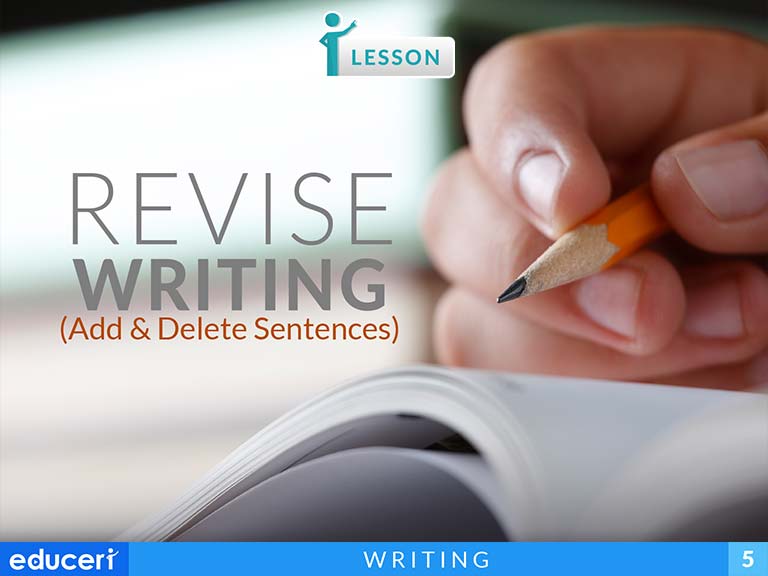
Revise Writing (Add & Delete Sentences)
This writing lesson covers how to revise writing by adding or deleting sentences based on how they support the main idea. The lesson includes research-based strategies and strategic questions that prepare students for assessments. In this lesson, students will learn how to change the written text to improve it by determining which details support the main idea and which don’t.
Share This Lesson
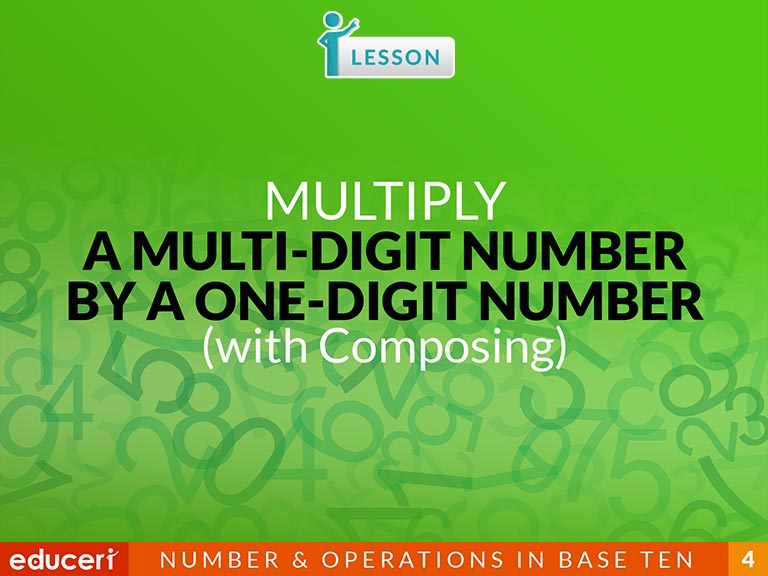
Multiply a Multi-Digit Number By a One-Digit Number (with Composing)
This number sense lesson focuses on multiplying numbers with regrouping. The lesson includes research-based strategies and questions that help prepare students for assessments. In this lesson, students multiply the bottom number with each digit of the top number, regrouping if needed (add the regrouped number, if needed). Then, they read the product aloud. In addition to the lesson, there are four pages of Independent Practice and review with questions modeled after current adaptive testing items.
Share This Lesson
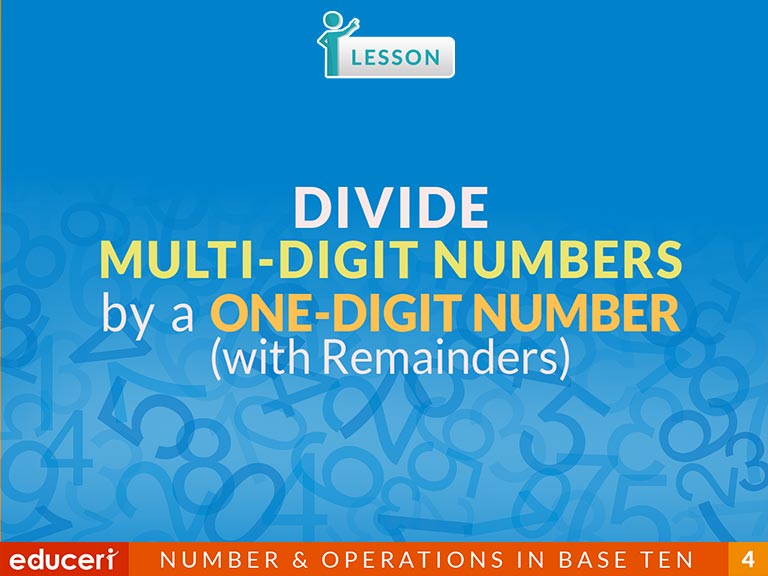
Divide Multi-Digit Numbers By a One-Digit Number (with Remainders)
This number sense lesson focuses on solving division problems that have a remainder. The lesson includes research-based strategies and questions that help prepare students for assessments. In this lesson, students identify the dividend and the divisor. Then, they solve for the division problem by following the basic steps of division (divide, multiply, subtract, and bring down) and writing in the remainder. Finally, students interpret the quotient and remainder. In addition to the lesson, there are eight pages of Independent Practice and review with questions modeled after current adaptive testing items.
Share This Lesson
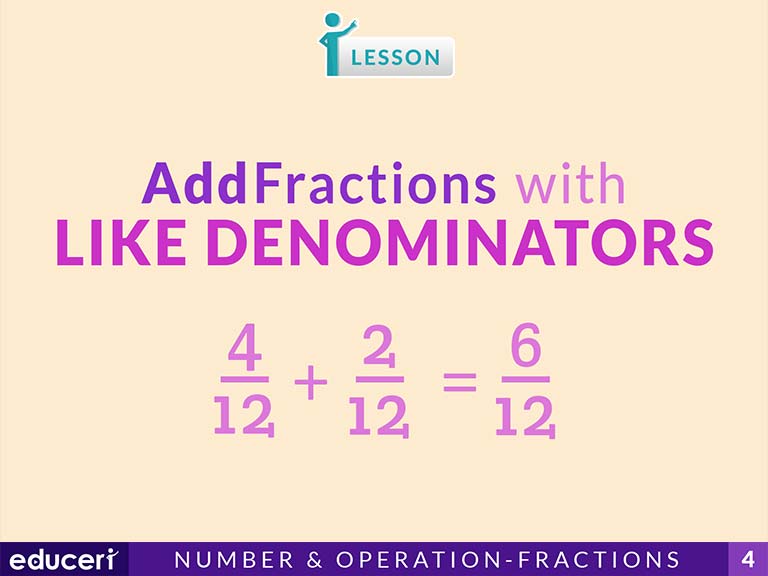
Add Fractions with Like Denominators
This number and operations -- fractions lesson teaches students how to add fractions with like denominators. The lesson includes research-based strategies and strategic questions that prepare students for assessments. In this lesson, students will add fractions with like denominators. This lesson includes a variety of real-world examples. This lesson also covers reducing fractions.
Share This Lesson
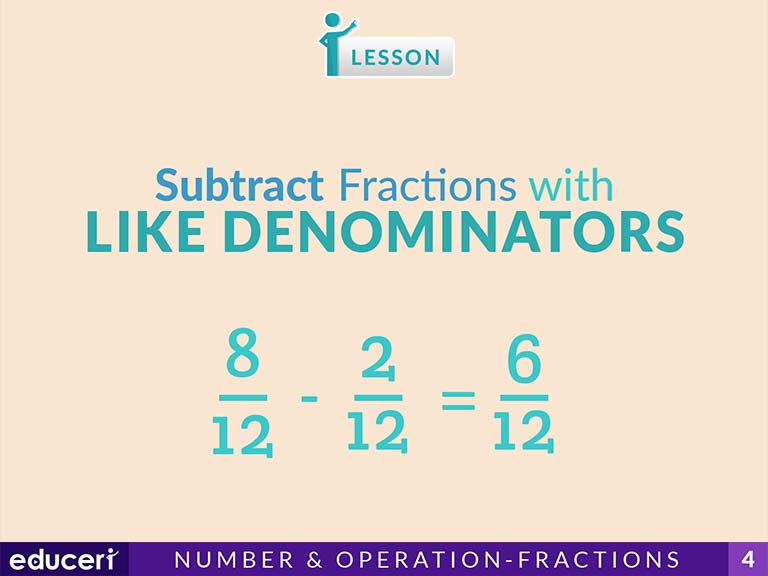
Subtract Fractions with Like Denominators
This number and operations -- fractions lesson teaches students how to subtract fractions with like denominators. The lesson includes research-based strategies and strategic questions that prepare students for assessments. In this lesson, students will subtract fractions with like denominators. This lesson includes a variety of real-world examples. This lesson also covers reducing fractions.
Share This Lesson
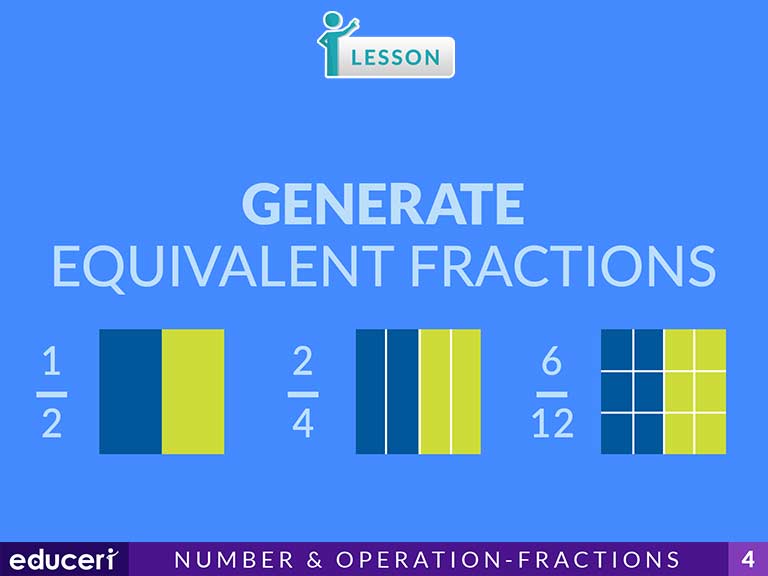
Generate Equivalent Fractions
This number and operations--fractions lesson teaches students how to generate equivalent fractions. The lesson includes research-based strategies and strategic questions that prepare students for assessments. In this lesson, students will create equivalent fractions. This lesson focuses on changing a fraction to another. Students are provided a variety of strategies and support to visualize the equivalence. Real-world examples are also provided.
Share This Lesson
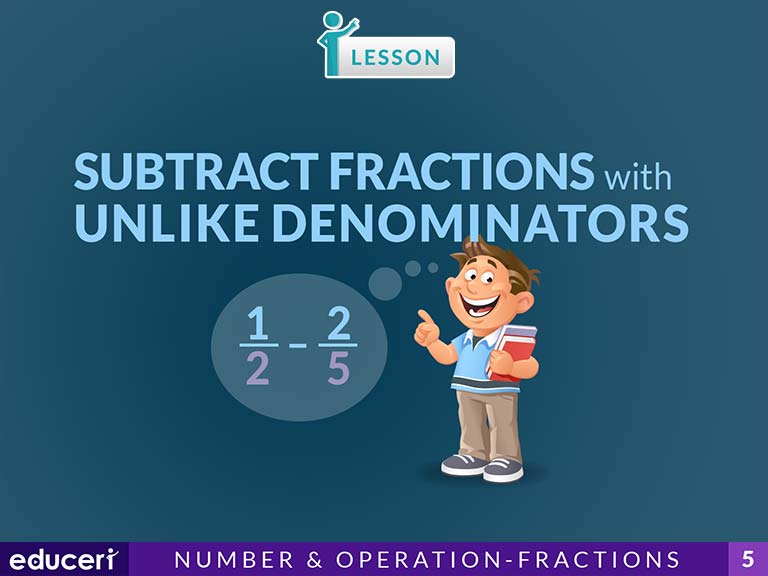
Subtract Fractions with Unlike Denominators
This number and operations--fractions lesson teaches students how to subtract fractions with unlike denominators. The lesson includes research-based strategies and strategic questions that prepare students for assessments. In this lesson, students create equivalent fractions to subtract fractions with unlike denominators. Reducing the results is not addressed. This lesson focuses on unlike denominators that require both fractions to be changed.
Share This Lesson
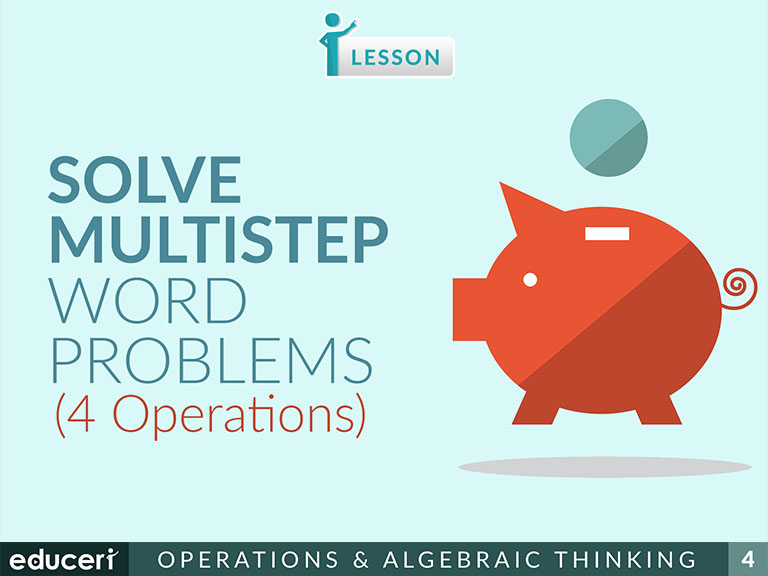
Solve Multistep Word Problems
(H) Solve with fluency one- and two-step problems involving multiplication and division, including interpreting remainders.
5.3.I(I) Represent and solve multiplication of a whole number and a fraction that refers to the same whole using objects and pictorial models, including area models
(Y4) Solve word problems by using number sentences involving multiplication or division where there is no remainder (ACMNA082)
ACMNA083(Y4) Find unknown quantities in number sentences involving addition and subtraction and identify equivalent number sentences involving addition and subtraction (ACMNA083)
Share This Lesson
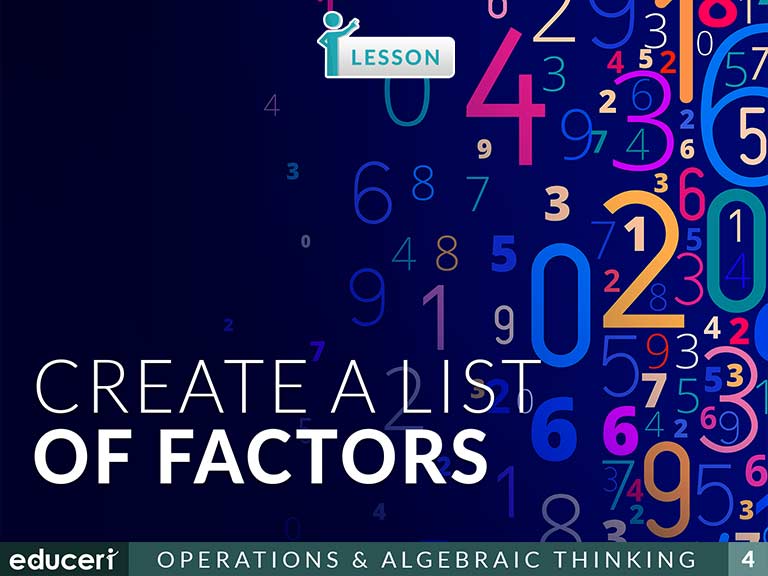
Create a List of Factors
(F) Recall facts to multiply up to 10 by 10 with automaticity and recall the corresponding division facts
3.5.D(D) Determine the unknown whole number in a multiplication or division equation relating three whole numbers when the unknown is either a missing factor or product
This number sense lesson focuses on creating a list of factors. The lesson includes research-based strategies and questions that help prepare students for assessments. In this lesson, students look at the product given and write the first-factor pair. Then, they list any other factor pairs which have the given product. Finally, students interpret the list of factors. In addition to the lesson, there are 9 pages of Independent Practice and Periodic Reviews with questions modeled after current adaptive testing items.
Share This Lesson
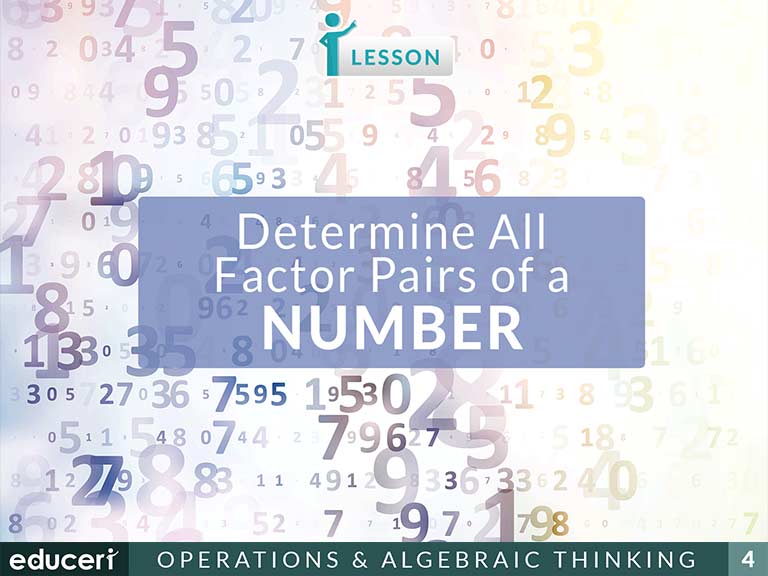
Determine All Factor Pairs of Numbers
This operations and algebraic thinking lesson teaches students how to determine all the factor pairs of a number. The lesson includes research-based strategies and strategic questions that prepare students for assessments. In this lesson, students will determine all of the factor pairs of a given number. This is in preparation for later mathematics where students will need to determine a variety of factors for fractions, factoring equations, and several other uses for this particular skill. It is an excellent introduction to factoring and provides several real-world examples for students to practice with.
Share This Lesson
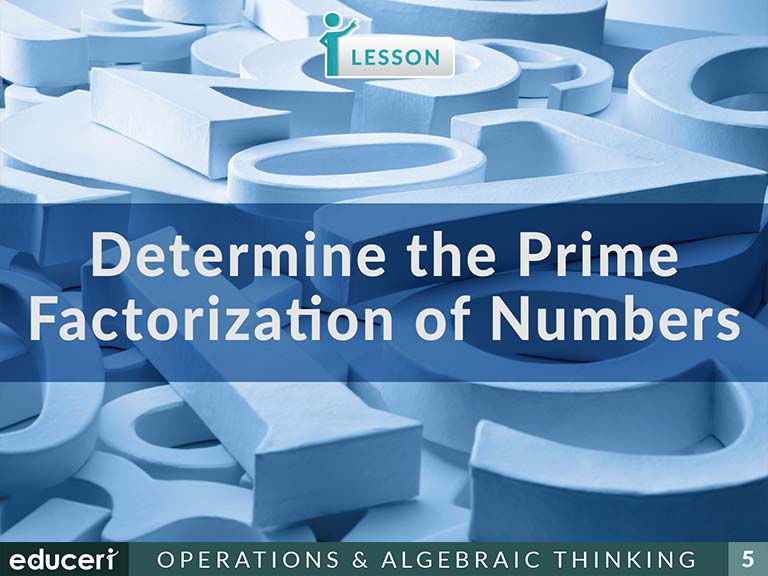
Determine the Prime Factorization of Numbers
This number sense lesson focuses on determining the prime factorization of numbers. The lesson includes research-based strategies and strategic questions that prepare students for assessments. In this lesson, students determine the prime factorization of the number using a factorization tree, factoring all composite numbers until they are prime. Finally, they write the prime factorization using exponents if necessary and checking and interpreting the answer. In addition to the lesson, there are twelve pages of Independent Practice and review with questions modeled after current adaptive testing items.
